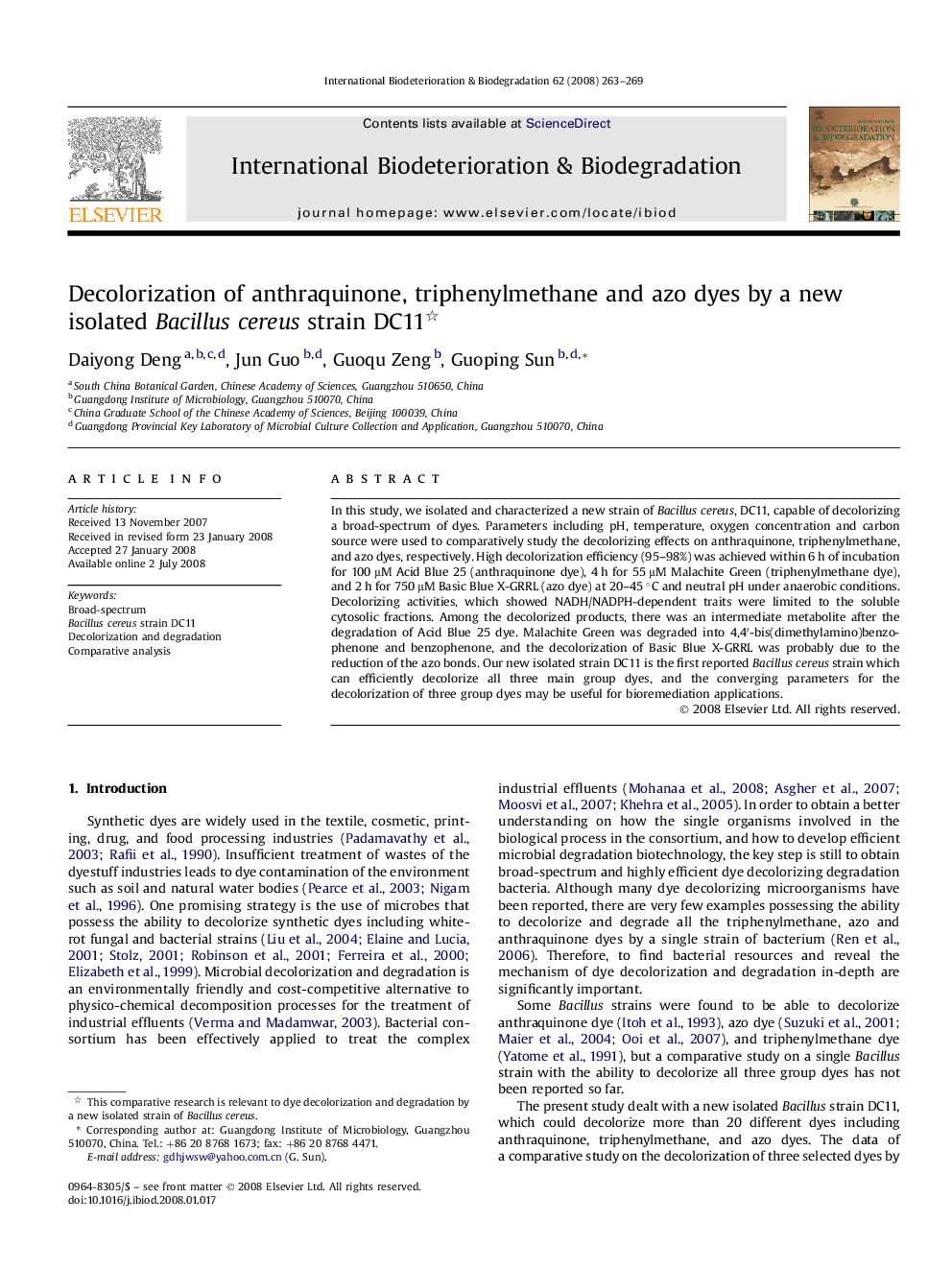| کد مقاله | کد نشریه | سال انتشار | مقاله انگلیسی | نسخه تمام متن |
|---|---|---|---|---|
| 4365689 | 1301772 | 2008 | 7 صفحه PDF | دانلود رایگان |

In this study, we isolated and characterized a new strain of Bacillus cereus, DC11, capable of decolorizing a broad-spectrum of dyes. Parameters including pH, temperature, oxygen concentration and carbon source were used to comparatively study the decolorizing effects on anthraquinone, triphenylmethane, and azo dyes, respectively. High decolorization efficiency (95–98%) was achieved within 6 h of incubation for 100 μM Acid Blue 25 (anthraquinone dye), 4 h for 55 μM Malachite Green (triphenylmethane dye), and 2 h for 750 μM Basic Blue X-GRRL (azo dye) at 20–45 °C and neutral pH under anaerobic conditions. Decolorizing activities, which showed NADH/NADPH-dependent traits were limited to the soluble cytosolic fractions. Among the decolorized products, there was an intermediate metabolite after the degradation of Acid Blue 25 dye. Malachite Green was degraded into 4,4′-bis(dimethylamino)benzophenone and benzophenone, and the decolorization of Basic Blue X-GRRL was probably due to the reduction of the azo bonds. Our new isolated strain DC11 is the first reported Bacillus cereus strain which can efficiently decolorize all three main group dyes, and the converging parameters for the decolorization of three group dyes may be useful for bioremediation applications.
Journal: International Biodeterioration & Biodegradation - Volume 62, Issue 3, October 2008, Pages 263–269